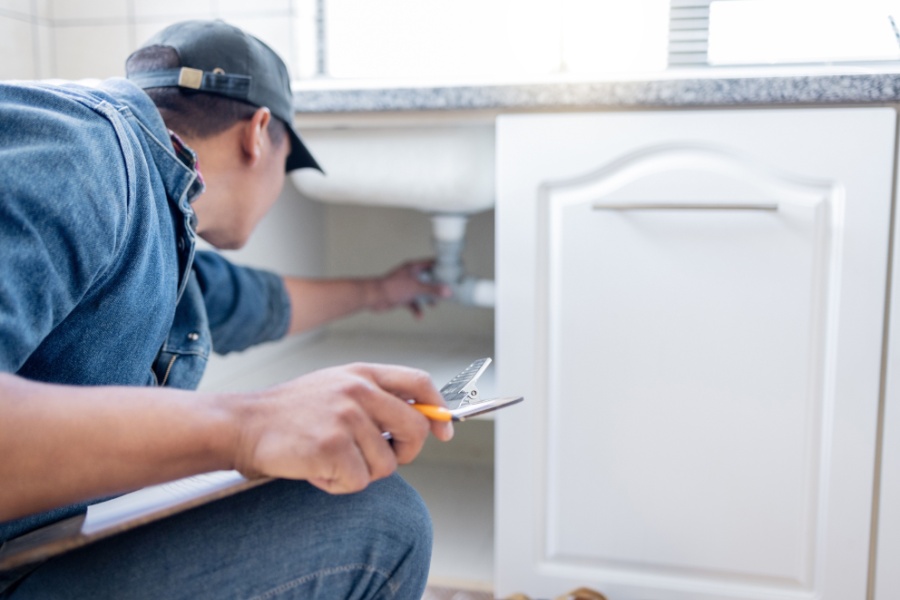Buying a home is a big step in one’s life, but the process can often feel overwhelming, especially for those purchasing pre-selling homes. A house turnover checklist is an important tool in the homebuying journey, as it helps guarantee a smooth transition from the developer to the homeowner.
This comprehensive home buying guide will discuss the significance of a home turnover checklist, especially for pre-selling home buyers, and run through the components that should be included within it.
What is the Meaning of a House Turnover Checklist?
Firstly, let’s dissect what a house turnover checklist means. Essentially, it’s a comprehensive list of tasks and inspections that need to be completed before the homeowner takes possession of the property. This checklist serves as a roadmap to help you ensure that all necessary procedures are observed and any discrepancies are addressed before the handover.

What is the Importance of a Checklist During a House Turnover?
A home is one of the most significant and expensive purchases you will make in your lifetime, making it a worthwhile investment for OFWs. Due diligence is crucial to ensure you get your money’s worth, especially when buying a pre-selling home. Unlike ready-for-occupancy properties, pre-selling homes are still under construction or development, meaning you won’t see the final product until after you’ve paid for it. Having a thorough checklist becomes is important for:
Transparency and Accountability
A house turnover checklist acts as a safeguard against potential discrepancies or unfinished work as it provides a clear record of what was promised by the developer. It holds both parties—developers and buyers alike—accountable for their respective responsibilities, making sure there is transparency in the transaction process.
Identification of Deficiencies
Inspecting a property in its pre-selling stage gives you the chance to identify any defects early on. This proactive approach lets you request necessary repairs or adjustments from the developer before the final turnover, minimizing the risk of future inconveniences or disputes.
Timely Resolutions
Addressing issues prior to the turnover enables timely resolutions, preventing potential delays or complications during the occupancy phase. With a clear roadmap outlined in the checklist, developers can prioritize and speed up the resolution of any outstanding concerns, ensuring a seamless transition to you.
Peace of Mind
A turnover checklist provides peace of mind by ensuring every aspect of your new home, whether it’s an OFW house and lot for sale in the Philippines or any other property, meets your expectations and the developer’s contractual agreements. It assists with comprehensive inspections, verifies developer promises, and assures quality. This systematic approach also ensures legal and contractual compliance, which in effect reduces your stress and anxiety.
Ultimately, a checklist instills confidence in your purchase, allowing you to enjoy your new home with assurance and satisfaction.
How Long Does It Take to Conduct a Home Turnover Check?
On average, it may take several hours to a full day. Larger or more complicated homes might take longer, while smaller ones could be quicker. Identifying any issues may also add time, as they may need further assessment or discussion.
Examples of a House Turnover Checklist
Now that we’ve established the importance of a house turnover checklist, let’s take a look at what you need to check during a house turnover.

Exterior
A good place to start is outside your home. Carefully inspect the main entrance to ensure the exterior finishes are clean and well-executed. Look for cracks or uneven surfaces, and examine the paint job for any chips, scratches, or uneven coating. This thorough check will help you identify potential issues early.
Structural Integrity
Next, it’s important to conduct a thorough examination of various parts of the property to ensure its quality and structural integrity. Take a close look at the walls, ceilings, and floors for any signs of cracks or uneven surfaces, which could indicate underlying issues that may need attention.
Moving on to the doors, make sure they open and close easily without any sticking. Check for any damage such as scratches or dents and assess the durability of the doorknobs to ensure they don’t rust and can securely lock. Additionally, it’s a good idea to obtain spare keys and verify clear visibility through any peepholes at eye level for added security.
After examining the doors, turn your attention to the windows. Look for any cracks or damage in the glass and frame, and open and close each window to ensure they move smoothly. Check the tracks, seals, and locks to confirm they are functioning properly and can securely lock the windows when closed.
Finally, don’t forget to thoroughly inspect the roof for any defects such as leaks or structural damage that may cause problems, particularly during the rainy season. By taking these steps, you can ensure that your doors, windows, and roof are in good condition and working as they should, which helps to keep your home safe and comfortable for you and your family.

Plumbing and Electrical Systems
Plumbing and electrical systems are commonly neglected areas during property inspections, which can result in significant expenses for repairs later on. To steer clear of potential headaches down the line, it’s essential to conduct comprehensive evaluations of these crucial systems.
When it comes to plumbing, take the time to inspect faucets, sinks, toilets, and showers thoroughly. Look for any signs of leaks or irregular water pressure, as addressing these issues early can prevent more extensive damage and costly repairs in the future. By identifying potential plumbing problems early on, you can save yourself both time and money in the long run.
Similarly, don’t overlook the importance of checking your home’s electrical system. Test all electrical outlets, switches, and fixtures to ensure they are functioning correctly and meet safety standards. Faulty electrical components not only pose a safety risk but can also lead to inconvenient disruptions and expensive repairs if left unaddressed.
Finishes and Fixtures
During the inspection, pay close attention to the interior finishes to ensure they meet your standards. Examine the paint, tiles, and flooring for any imperfections that could affect the overall appearance or longevity of the home. Likewise, check cabinets, countertops, and fixtures for damage like scratches or broken parts. This careful examination allows you to verify the quality and consistency of the interior finishes before finalizing the purchase, helping you avoid any unpleasant surprises or additional expenses later on.

Safety and Security Features
Your safety and security are vital and should never be compromised. Make sure that necessary security features such as door locks, window latches, and security systems are in proper working condition. Additionally, check emergency exits to confirm they are easily accessible and compliant with safety standards. Taking these precautions helps safeguard your well-being and provides peace of mind in your new home.
Documentation and Contracts
Lastly, you need to thoroughly review the sales contract, warranty terms, tax implications, and any additional agreements related to the purchase. This ensures that all terms and conditions are clear and agreed upon before you proceed with moving in.
If any defects are discovered during the turnover inspection, this step serves as an opportunity to document agreed-upon repairs or modifications.
Finally, both you and the developer should confirm the completion of all written obligations and ensure that all agreed-upon tasks have been fulfilled before the final turnover occurs. While meticulous, this process helps to prevent misunderstandings and ensures a smooth transition into your new home.
Ensure a Hassle-free Transition into Your New Home
A house turnover checklist in the Philippines is a key tool for anyone purchasing a new home. From inspecting the exterior and interior finishes to verifying the functionality of plumbing, electrical, and security systems, this organized approach ensures that your investment meets your expectations. By carefully reviewing contracts, documenting agreed-upon repairs, and confirming the completion of all obligations, you can navigate the turnover process with confidence and peace of mind.
Ultimately, a thorough house turnover checklist sets the foundation for a smooth transition into your new living space, allowing you to enjoy your home with assurance and satisfaction for years to come.
Looking for a General Trias house and lot for sale to call your own? Explore Minami’s pre-selling houses in Cavite today and discover the perfect place to call your own. Browse our house models now and start your journey towards homeownership with Minami.
